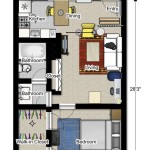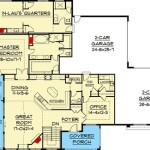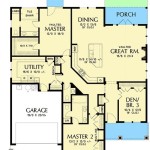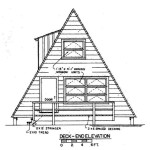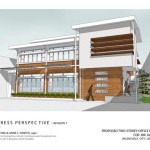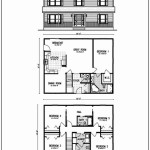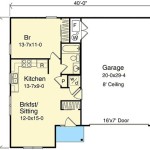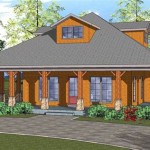Adding On To House Plans: Expanding Your Home's Potential
As life evolves, so too do housing needs. A starter home that once felt spacious can begin to feel cramped as families grow, hobbies expand, or the desire for dedicated workspaces emerges. Rather than undertaking the significant undertaking of selling and relocating, many homeowners are increasingly turning to additions as a means of enhancing their existing property and meeting their changing requirements. This process hinges significantly on the existing house plans which need careful assessment for any modifications or additions.
Adding onto existing house plans is a multi-faceted project that requires careful planning, consideration of structural integrity, adherence to local building codes, and a clear understanding of desired outcomes. This endeavor goes beyond simply adding square footage; it's about seamlessly integrating new spaces that complement the existing home's aesthetic and functionality. Properly executed, an addition can significantly enhance a property's value and improve the quality of life for its inhabitants.
Understanding the Existing House Plans
The foundation of any successful home addition is a thorough understanding of the existing house plans. These documents provide a detailed roadmap of the home's structural components, electrical systems, plumbing layout, and overall architectural design. Before even entertaining the idea of an addition, homeowners must obtain or recreate these plans. If the original blueprints are unavailable, a qualified architect or engineer can perform a "measured survey" to create accurate drawings of the existing structure.
Analyzing these plans is crucial to determine the feasibility of various addition options. Identifying load-bearing walls, the type of foundation, the roof structure, and the location of utilities will inform design decisions and prevent costly surprises down the line. For example, adding a second story requires assessing the foundation's capacity to support the additional weight. Relocating plumbing or electrical lines can add significant expense and complexity to the project. Furthermore, understanding the existing structural system will also help determine the best integration points for the new addition.
The existing house plans should also be studied to ensure that the addition aligns with the overall architectural style of the home. A seamless integration will create a cohesive and aesthetically pleasing result, while a poorly designed addition can detract from the property's value and curb appeal. Consideration of roof lines, window placement, and exterior materials is essential for achieving a harmonious blend.
Key Considerations for Different Types of Additions
The type of addition chosen significantly impacts the design process and associated costs. Each type presents unique challenges and opportunities that must be carefully evaluated. Common addition types include: bump-outs (small extensions of an existing room), room additions (larger expansions that create entirely new spaces), second-story additions, and garage conversions.
Bump-outs, while relatively small, can significantly improve the functionality of existing rooms. For instance, a kitchen bump-out can create space for a breakfast nook or a larger island. These additions often require minimal structural changes and can be a cost-effective way to enhance living spaces. However, careful attention must be paid to roof tie-ins and ensuring proper weatherproofing.
Room additions, such as adding a new bedroom, bathroom, or family room, are more substantial undertakings. These additions require more extensive foundation work, framing, roofing, and utility connections. Integrating the addition seamlessly with the existing home's layout is crucial. Traffic flow and accessibility should be carefully considered to ensure a functional and comfortable living space.
Second-story additions are among the most complex and costly types of additions. They require a thorough assessment of the existing foundation's load-bearing capacity and may necessitate structural reinforcement. Careful planning is essential to minimize disruption to the existing home during construction. Addressing stair placement, roof integration, and ensuring adequate insulation are also vital considerations.
Garage conversions offer a relatively cost-effective way to add living space, provided the garage is adequately insulated and structurally sound. Considerations include ensuring proper ventilation, addressing moisture issues, and integrating the new space with the existing home's heating and cooling systems. Local zoning regulations may also dictate allowable uses for garage conversions.
Navigating Building Codes and Permits
Adhering to local building codes and obtaining the necessary permits is a non-negotiable aspect of any home addition project. Building codes are in place to ensure the safety and structural integrity of buildings, as well as to protect the health and well-being of occupants. Failure to comply with these regulations can result in costly fines, delays, and even the requirement to demolish unpermitted work.
The specific building codes and permit requirements vary depending on the location. Homeowners should consult with their local building department to understand the applicable regulations. These regulations typically cover aspects such as structural requirements, electrical wiring, plumbing, fire safety, and energy efficiency.
The permit application process typically involves submitting detailed plans of the proposed addition, along with supporting documentation such as structural calculations and energy efficiency reports. The building department will review these plans to ensure compliance with the building codes. Inspections are typically conducted at various stages of the construction process to verify that the work is being performed according to the approved plans and applicable codes.
Engaging a qualified architect or contractor with experience in local building codes is highly recommended. These professionals can navigate the permit process efficiently and ensure that the addition meets all necessary requirements. Moreover, they can help anticipate potential issues and develop solutions to address them.
Structural Considerations and Engineering Input
The structural integrity of any home addition is paramount. The addition must be designed to withstand the same loads and stresses as the existing home, including wind, snow, and seismic forces. Improper structural design can lead to structural instability, water damage, and even collapse. Consequently, seeking professional engineering input is crucial.
A structural engineer will assess the existing foundation, framing, and roof structure to determine its capacity to support the addition. They will perform calculations to ensure that the new addition is adequately supported and that the existing structure is not overloaded. The engineer may recommend structural modifications or reinforcements, such as adding footings, reinforcing walls, or upgrading the roofing system.
For complex additions, such as second-story additions or additions that involve significant alterations to the existing structure, a structural engineer's involvement is particularly critical. They can provide detailed drawings and specifications that guide the construction process and ensure that the addition is structurally sound.
The engineer's recommendations should be carefully followed during the construction process. Any deviations from the approved structural plans should be reviewed and approved by the engineer to ensure that they do not compromise the structural integrity of the addition.
Integrating Utilities and HVAC Systems
Adding onto a house often necessitates extending or modifying the existing utility systems, including plumbing, electrical, and HVAC (heating, ventilation, and air conditioning). These systems must be properly integrated into the addition to ensure comfort, safety, and functionality.
Plumbing extensions involve running new water lines and drain lines to the addition. The existing plumbing system must be adequately sized to handle the increased demand. Considerations include water pressure, pipe materials, and compliance with local plumbing codes. A licensed plumber should be consulted to ensure that the plumbing system is properly designed and installed.
Electrical extensions involve running new wiring and adding electrical outlets and fixtures to the addition. The existing electrical panel must have sufficient capacity to handle the additional load. Considerations include circuit breakers, wiring gauge, and compliance with local electrical codes. A licensed electrician should be consulted to ensure that the electrical system is properly designed and installed.
HVAC system integration involves extending the existing heating and cooling system to the addition. The existing system may need to be upgraded to handle the increased heating and cooling load. Considerations include ductwork sizing, insulation, and energy efficiency. An HVAC professional should be consulted to determine the best way to integrate the HVAC system into the addition.
Careful planning and coordination are essential to ensure that the utility systems are properly integrated into the addition and that they meet the needs of the occupants.
Exterior Design and Material Matching
Maintaining a cohesive aesthetic is an important aspect of any home addition project. The exterior design of the addition should complement the existing home's style and character. Careful consideration should be given to the materials used, the roof lines, the window placement, and the overall proportions of the addition.
Material matching is crucial for achieving a seamless blend between the existing home and the addition. The siding, roofing, and trim materials should be as closely matched as possible. If the original materials are no longer available, alternative materials that closely resemble them can be used. Paint colors should also be carefully matched to ensure a consistent look.
Roof lines should be carefully considered to ensure that the addition integrates harmoniously with the existing roof. The addition's roof pitch and style should be similar to the existing roof. The roofing materials should also be matched to create a cohesive appearance.
Window placement should be carefully planned to ensure that the addition has adequate natural light and ventilation. The window styles and sizes should be similar to the existing windows. The window placement should also be coordinated with the interior layout to maximize views and functionality.
By paying careful attention to exterior design and material matching, homeowners can ensure that the addition enhances the property's curb appeal and adds value to the home.
Budgeting and Cost Control
Adding onto a house can be a significant financial investment. Developing a realistic budget and implementing effective cost control measures are essential for ensuring that the project stays within budget and avoids unexpected expenses.
The budget should include all anticipated costs, including design fees, permit fees, construction materials, labor costs, and contingency funds for unforeseen expenses. Obtaining multiple bids from qualified contractors is recommended to ensure competitive pricing.
Cost control measures can include value engineering, which involves identifying ways to reduce costs without compromising quality or functionality. For example, alternative materials or construction methods can be considered to reduce expenses.
Regular communication with the contractor is essential for tracking progress and identifying potential cost overruns early on. Change orders, which are written agreements to modify the original contract, should be carefully reviewed and approved before any work is performed. Maintaining detailed records of all expenses is also crucial for tracking costs and ensuring that the project stays within budget.
By carefully planning the budget and implementing effective cost control measures, homeowners can minimize the risk of financial surprises and ensure that the addition project is completed within budget.

Small House Plans Add Flexibility To Your Home With Adus Houseplans Blog Com

Can A Custom Builder Make My Floor Plan Bigger 5 Ways To Add Square Footage Travars Built Homes

Home Addition Plan 5179

Pin On My Better Homes And Gardens Dream Home

Remodel And Addition Plans Blueprints Home Room Additions

Free Blueprints New Line Home Design Expandable Plan Collection

Home Addition Plan 5179

Space Planning A Cape Add On Building Advisor

Nishad Add Plan Pinoy House Plans

Add A Floor Convert Single Story Houses Home Addition Plans Two House Bedroom

